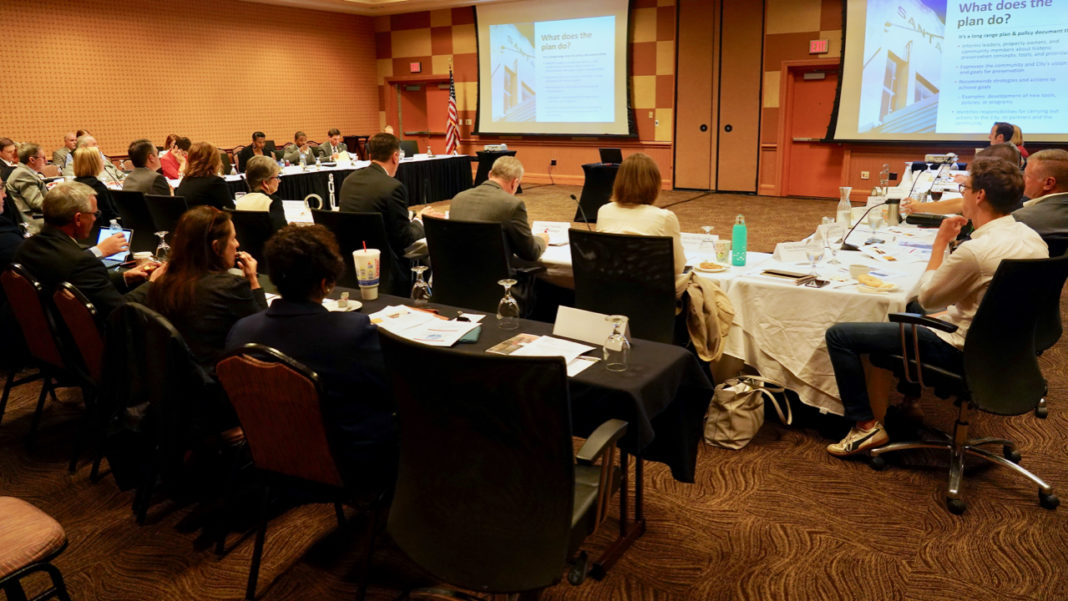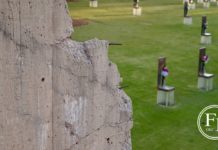Last Updated on October 16, 2019, 2:49 PM | Published: October 15, 2019
In what can only be described as a thrill ride for the ages, members of three governing bodies from the city met on Tuesday to hear the initial presentation on the Planning Department’s comprehensive Historic Preservation Plan.
Called “preserveokc” (sic), the plan was presented by city staff to members of the City Council, Planning Commission, and Historic Preservation Commission. A collection of slides were shown, a booklet was handed out, and people asked questions. It was all the excitement of a Planning Commission meeting but with three times the attendees!
How the sausage gets made
Local government according to columnist Marty Peercy
Preserveokc is the next phase of the City’s Comprehensive Plan – planokc (sic)– coming on the heels of the cycling and pedestrian infrastructure plan – bikewalkokc (sic) – and ahead of the sustainable development plan – which this writer simply has to assume will be called “sustainokc (sic?).”
The plan presented will continue to be fine-tuned until it is delivered to the Historic Preservation Commission on November 6. If the Historic Preservation Commission recommends the plan, it will be presented to the Planning Commission on November 14. If the Planning Commission adopts the plan at their December 12 meeting, it will move on to hearing at the City Council at their December 31 meeting.
Plan Makeup
The purpose of the plan is to inform community members and leaders about historic preservation and to find and recommend strategies for achieving goals related to preservation. While the plan is not a regulatory document, it serves as a guide for preservation efforts. These purposes will be served by four “Big Ideas.”
Big Ideas
The big ideas are listed by the Planning Department as “Enhance Public Support,” “Practice Good Stewardship,” “Protect Historic Resources Citywide,” and “Develop Effective Tools.” Each of these was presented with several initiatives.
Enhancing public support would be achieved by raising public awareness and encouraging public participation.
Practicing good stewardship would consist of preserving city-owned resources and guaranteeing their preservation if there is a change in ownership.

Protecting historic resources city-wide requires identifying historic resources across the city, managing changes affecting those resources, and finding ways to address dilapidated historic places before they become dilapidated.
Developing effective tools means the possible rethinking of existing incentives for development, for example, TIFs, as an incentive for preservation.
To learn more, here is the slide deck used during the meeting by city planning staff.
preserveokc-presentation-council-briefingComments & Questions
Ward 6 Planning Commissioner Asa Highsmith asked if the city planned to continue to tie preservation to land use. He said that while planokc recommends density, preservation tends to protect land use standards such as single-family residential zoning.
Ward 8 Councilman Mark Stonecipher had questions and concerns regarding the speed and ease of preserving sites and encouraged featuring “user-friendly” policies for property owners.
Property Rights
The conversation turned, as it so often does, to the rights of property owners.
Janis Powers, Chair of the Planning Commission, again pointed out that this framework is about the preservation of historic sites, not about taking rights away or bestowing rights.
She suggested that the discussion of the rights of property owners was a false dichotomy.
There was little if any debate, rare for a group this large. Then again, three city councilors were missing.
The common thread in the comments from people on the panel seemed to be clarifying and simplifying language, with an emphasis on making sure the public knows this is a guideline and not a regulation.
Scott Cravens, who represents Ward 8 on the Planning Commission, said that without clarification people may ply this document toward their own confirmation bias.
UPDATED: 10-16-19, 5:28, 9:34 a.m.
Columnist covering local government in Oklahoma City and Oklahoma County from May 2019 through June 2023.










